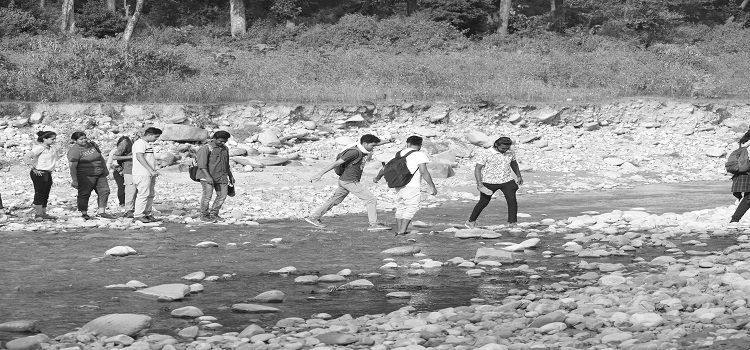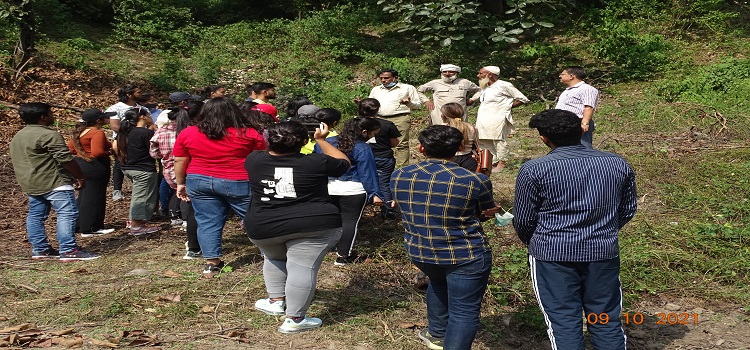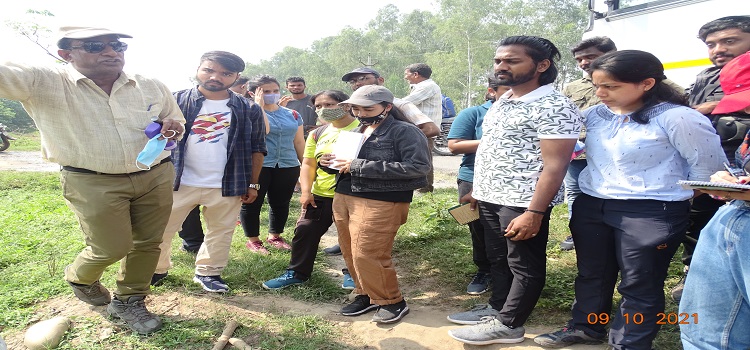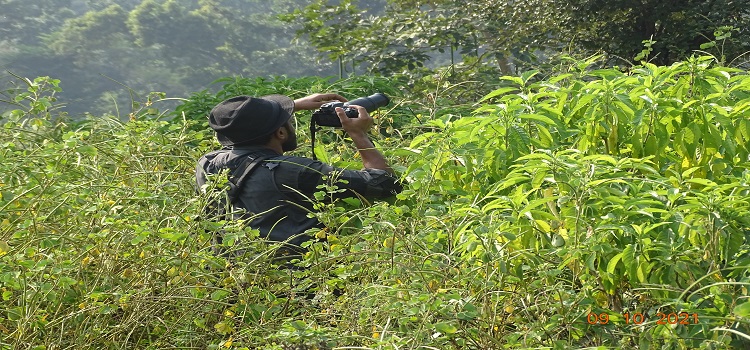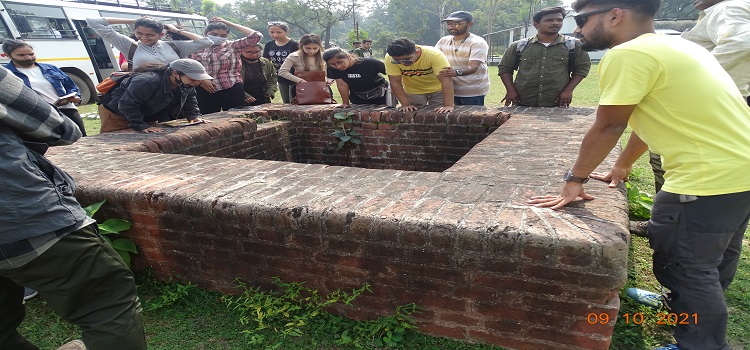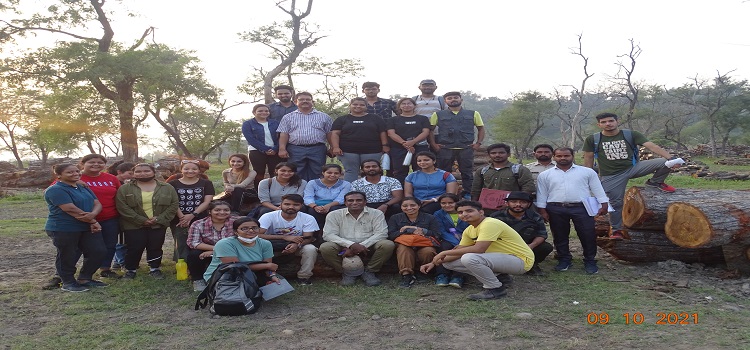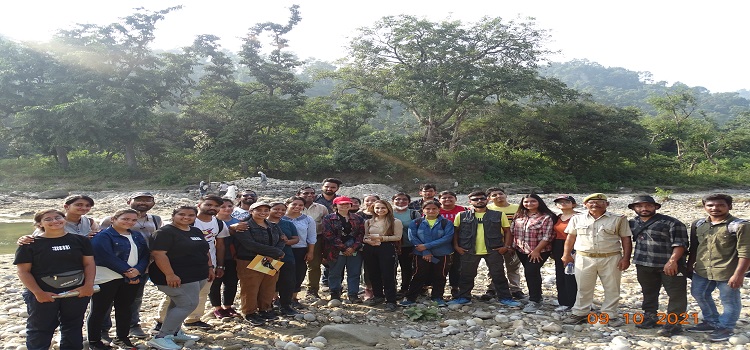M.Sc. ENVIRONMENT MANAGEMENT STUDY TOUR TO SHIVALIK FOREST DIVISON (MOHAND)
On October 2021 post COVID dismay we had our first education trip to Shivalik Forest Division under the guidance of Sh. S.R. Reddy. At first, we stopped by compartment three of Mohand Range, where we viewed the ongoing damage and destruction lend out to construct a contact highway by 2030. The Northern Tip of Saharanpur district has three ranges, towards the north lies the Mohand Range, To its west lies the Shaku Pali range, and to its west lies the Baikal Range. The prevalent forest type of the region is Northern Sub Tropical Moist Deciduous. To meet the sentiments of the local committee’s tress dwelling in the region the vegetation instead of being cut down was proposed to be translocated. Yes, apart from microscopic creatures then we first comprehended the process of macroscopic or tree translocation. To the next spot, we went down a highway to the residential area of the ancient dwellers of Mohand Forest Division – The Van Gujjars. The people of northern India's Van Gujjar are nomadic water buffalo herdsmen whose lives are centered on caring for and feeding their animals.
To the next spot, we met the DFO, who took us to the spot of tree translocation. There we were taught regarding the imprinting of glaze on bark, the usage, and the necessities of hammers for marking the trees to be harvested. Also, we had a very interesting sight of Alistonia coloris, the predominant vegetation of the roadside tree in the region which had rootball packing and processing for the process of ‘Tree Translocation’.
To the next locale, we were taken to UP Van Nigam Meerut Chetrra Timber depot Located at 4 km in the foothills of Shivalik ranges. After a break of half an hour, we were tutored regarding the volumes of the ‘Working Plan’ of the forest region which was formulated during the tenure of V.K Sinha and working plan officer A.K Acharya. The whole 19748 hectares of Baggala range have six different types of forest ranging from Northern Mixed Dry Deciduous in the hills to Sub Tropical Chir Forest. The forest had Adhatoda vasica as the indicator shrub species and predominated by Teak as the flowering tree. Therein we also saw the hill range enchanted with the hill supporter Bhabar grass (Eulaliopsis binata) the hill supporter. We were taken to a 4 km walk into the forest wherein we viewed a rubble structure with wire mesh binding which was constructed to hinder water overflow.
At 4:30 we returned to the depot, and post a small break with tea and pakora we were taken to visit the depot and we were edified regarding the marketing and certification of the stacks of timber from the depot. The trip ended on a great note, by 6:00 pm we returned back to the campus.
Article by: Ms. Anusreeta Dutta
Photos by: Mr. Piyush Chawda and Mr. Dhanush Eanara
M.Sc. Environment Management, 3rd Semester, FRIDU


